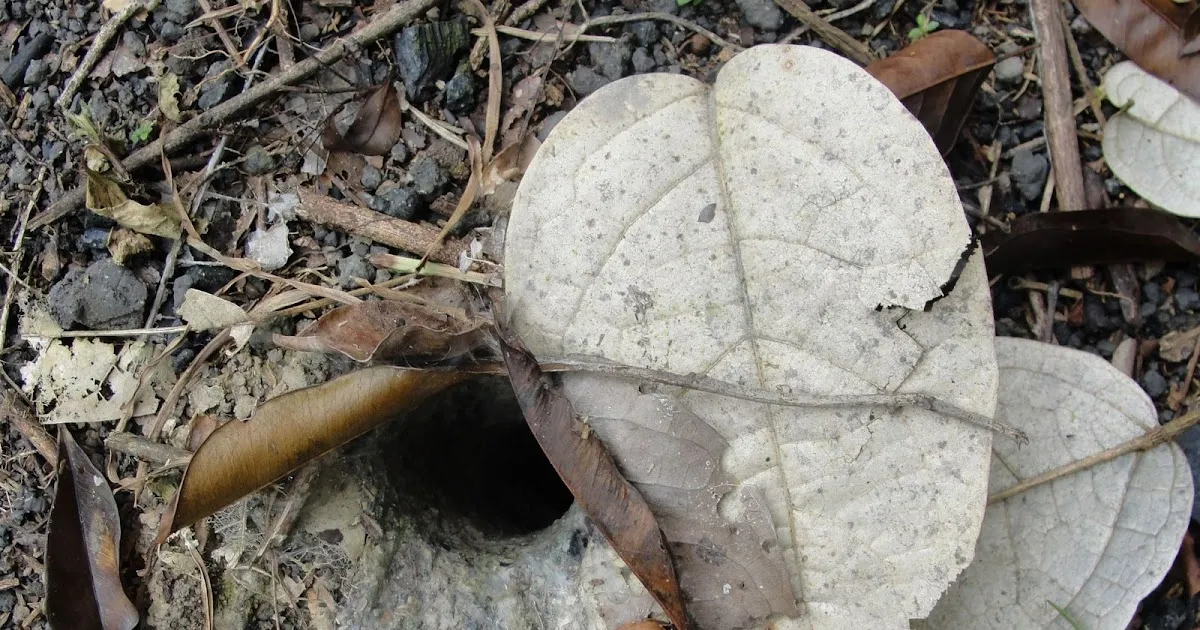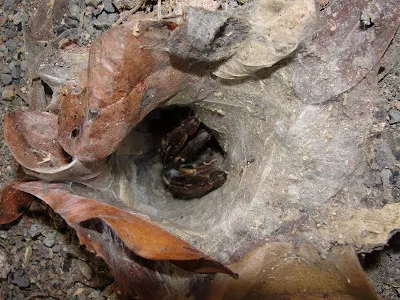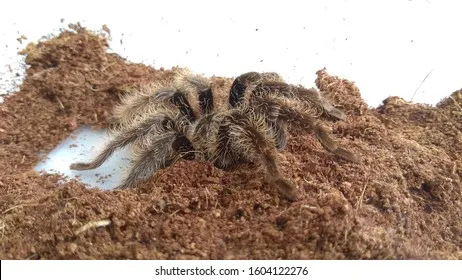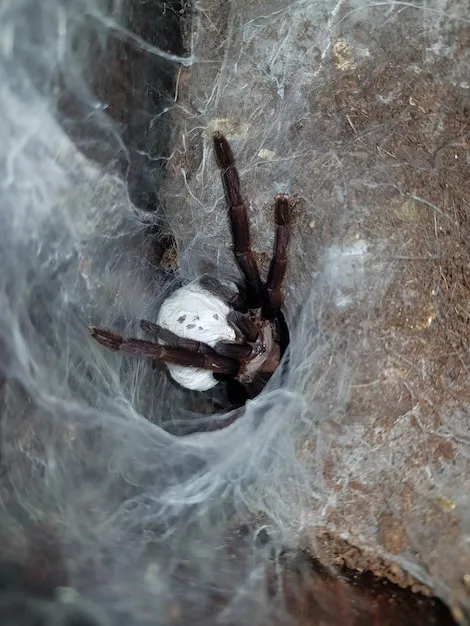What is a Tarantula Nest?
A tarantula nest is a fascinating example of arachnid architecture, serving as the primary home and sanctuary for these often misunderstood creatures. Unlike the complex webs spun by many other spiders, tarantulas typically create burrows or nests in the ground or under natural shelters. These nests are far more than just a simple hole in the earth; they are meticulously crafted structures designed to provide protection from the elements, predators, and a suitable environment for raising young. The design and construction of a tarantula nest can vary greatly depending on the species and its environment, showcasing a remarkable adaptation to diverse habitats. Observing these nests offers a unique glimpse into the private lives of tarantulas, revealing their behaviors, preferences, and the strategies they employ to survive.
Location Location Location Where Tarantulas Build Nests
The location of a tarantula nest is a crucial factor in its inhabitants’ survival. Tarantulas are opportunistic when it comes to finding a suitable location. Most species prefer areas with well-draining soil to prevent flooding, especially during the rainy season. They often seek out locations that offer some form of natural cover, such as under rocks, tree roots, or in the crevices of hillsides, which provide protection from the elements and potential predators. The availability of prey is another critical factor; nests are frequently found in areas where insects, their primary food source, are abundant. Some tarantulas construct their nests in the open, while others prefer hidden locations, reflecting their differing defensive strategies and habitat preferences. Understanding the importance of location helps us appreciate the tarantula’s survival tactics and their careful selection of a home.
Burrowing Behavior How Tarantulas Create Their Nests

Burrowing is a fundamental behavior for many tarantulas, representing how they create their nests. This process involves a combination of physical effort and the strategic use of silk. The tarantula employs its powerful chelicerae (mouthparts) and pedipalps (leg-like appendages near the mouth) to excavate the soil, gradually creating a tunnel or burrow. They may also use their legs to move soil outwards, carefully shaping the entrance and the interior of the nest. The construction method varies depending on the species and the type of soil. Some tarantulas prefer to dig a straight, simple burrow, while others create more complex structures with multiple chambers or escape routes. This labor-intensive process can take days or even weeks, but the result is a secure and comfortable home that is essential for the tarantula’s survival and reproduction.
The Structure of a Tarantula Nest
The structure of a tarantula nest is generally a burrow, but it can vary significantly in complexity. The simplest nests are essentially a single tunnel leading to a chamber where the tarantula spends most of its time. More elaborate nests may include multiple chambers, different levels, and side tunnels. The entrance to the nest is often reinforced with silk, forming a silken door or a web that the tarantula uses to detect vibrations, which can signal the presence of prey or predators. The interior of the nest is typically lined with silk, providing a smooth surface and helping to maintain humidity levels. Some tarantulas also incorporate debris, such as leaves or pebbles, to camouflage the entrance and enhance the nest’s structural integrity. This meticulous construction highlights the tarantula’s engineering skills and the critical importance of their homes.
Silk Usage How Tarantulas Use Silk in Nest Building
Silk is a crucial material in the construction and maintenance of a tarantula nest, serving several purposes beyond just structure. Tarantulas produce silk from spinnerets located at the end of their abdomen. This silk is used to line the walls of the burrow, reinforcing the soil and preventing it from collapsing. The silk also acts as a moisture regulator, helping to maintain the necessary humidity levels within the nest. In addition to lining the burrow, tarantulas use silk to create the entrance, which can be a simple silken door or a more complex web. They also use silk to create a “tripwire” system just outside the entrance. This network of silken threads helps the tarantula detect the presence of prey or potential threats, alerting them to activity nearby. Silk is thus an essential tool for the tarantula, playing a vital role in its protection, hunting strategies, and overall survival.
Nest Purpose Protecting and Raising Spiderlings

The primary purpose of a tarantula nest is to provide a safe and secure environment for the spider to live, grow, and, in the case of females, reproduce. The nest offers protection from predators, such as birds, lizards, and other spiders, and shelter from extreme weather conditions. For female tarantulas, the nest is especially crucial, as it is where they lay and protect their eggs. They create a silken egg sac within the nest, guarding it carefully until the spiderlings hatch. The nest then becomes the first home of these young tarantulas, offering them a protected space to develop and mature. Some tarantulas even provide parental care, staying with their young for a period of time. The nest, therefore, is not just a home; it is a vital component of the tarantula’s life cycle, ensuring the survival of the species.
Nest Defense Mechanisms
Tarantulas employ a variety of defense mechanisms to protect their nests from predators and other threats. The most obvious is the construction of the nest itself, which provides a physical barrier against intrusion. Many tarantulas have reinforced entrances or silken doors that make it difficult for predators to enter. They also use their chelicerae and fangs to defend their nests, and some species will bite if provoked. Another important defense mechanism is the tarantula’s ability to detect vibrations, alerting them to the presence of approaching danger. Furthermore, some tarantulas have urticating hairs on their abdomen that they can flick towards predators, causing irritation and discouraging attack. The combination of physical barriers, sensory awareness, and active defense strategies ensures that the tarantula’s nest remains a safe haven in a dangerous world.
Nest Adaptations For Different Environments
Tarantula nests exhibit remarkable adaptations to suit diverse environments, reflecting the species’ ability to thrive in a wide range of habitats. In arid regions, nests are often built deeper underground to access cooler, more humid conditions and reduce water loss. These nests might have thicker silk linings or incorporate specific materials to maintain humidity. In areas with heavy rainfall, tarantulas build nests with sloped entrances or drainage systems to prevent flooding. In tropical environments, where temperatures are consistently high, the nests might be shallower, and positioned under rocks or vegetation to provide shade. This adaptability is not limited to the physical structure of the nest; tarantulas also adjust their behavior. Some species are more active at night to avoid the heat, and others are more aggressive in defending their nests from predators. These environmental adaptations are key to the tarantula’s evolutionary success.
Tarantula Nest Photography Tips

Photographing tarantula nests can be a rewarding, yet challenging, endeavor. The key is to approach the subject with patience and respect for the tarantula and its home. Start by identifying potential nest locations; look for telltale signs such as small holes in the ground or silken threads. Before you begin, observe the surrounding area carefully to minimize disturbance and avoid startling the tarantula. A macro lens is essential for capturing the details of the nest structure and the surrounding environment. The natural light is often best, and you can use a reflector to soften shadows and enhance detail. When taking photos, avoid flash photography as it may disturb the tarantula. If you’re lucky enough to find a tarantula at home, take a photo from a safe distance and avoid any actions that could be seen as a threat. Remember the goal is to document the tarantula’s environment without interfering with its life.
